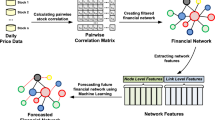Abstract
In this paper we explore some recent trends in the financial market and also report some studies of the Singapore futures markets. A characterization of trends shows that national securities markets are much closer than before. This means the linkages between securities and their derivatives and amongst themselves have be come much stronger. Secondly, the advent of sophisticated risk products and instruments and the knowledge to use them effectively would become a common theme together with the idea of value enhancements. Thirdly, computerizations and the internet will play an increasingly important role. So will empirical financial research become increasingly microscopic. The discussion will be supported by the experiences of the Singapore futures markets and various empirical research evidences. The paper also provides a detailed study of causality-in-variance test of information transmission between SIMEX and Osaka Stock Exchange on the Nikkei 225 stock index futures trading prior to, during, and immediately after the announcement of the collapse of Barings. The results are indicative of very strong international market linkages and a portent of things to come.
Similar content being viewed by others
References
Arshanapalli, B. and Doukas, J. (1993), International stock market linkages: Evidence from the pre-and post-October 1987 period, Journal of Banking and Finance 17, 193-208.
Bekaert, G. and Harvey, C.R. (1997), Emerging equity market volatility, Journal of Financial Economics 43, 29-77.
Bollerslev, T. (1986), A generalized autoregressive conditional heteroskedasticity, Journal of Econometrics 31, 307-327.
Centre for Research in Financial Services, NTU (1996), Report on Survey on the Impact of Electronic Deal-Matching Systems for Foreign Exchange Trading, prepared for The Singapore Foreign Exchange Market Committee.
Chang, J.S.K., Chang, C.W., and Lim, K.G. (1997), Information-Time Option Pricing: Theory and Empirical Evidence, Working Paper, National University of Singapore.
Cheung, Y.W. and Fung, H.G. (1995), Information Flows Between the Eurodollar Spot and Futures Markets, Working Paper No. 67, City University of Hong Kong.
Cheung, Y.W. and Ng, L.K. (1996), A causality-in-variance test and its application to financial market rpices, Journal of Econometrics 72, 33-48.
Divecha, A.B., Drach, J., and Stefex, D. (1992), Emerging markets: A quantitative perspective, Journal of Portfolio Management, Winter, 41-50.
Engle, R.F. (1982), Autoregressive conditional heteroskedasticity with estimates of the variance of UK inflation, Econometrica 50, 987-1008.
Engle, R.F. and Susmel, R. (1990), Intraday mean and volatility relations between US and UK stock market returns, Unpublished manuscript, Dept. of Economics, University of California, San Diego, CA.
Eun, C. and Shim, S. (1989), International transmission of stock market movements, Journal of Financial and Quantitative Analysis 24, 241-256.
Gehrig, T. (1993), An information based explanation of the domestic bias in international equity investment, Scandinavian Journal of Economics 95, 97-109.
Hamao, Y., Masulis, R.W. and Ng, V. (1990), Correlation in price changes and volatility across international stock markets, Review of Financial Studies 4, 543-569.
Hannan, E.J. (1970), Multiple Time Series, John Wiley & Sons.
Harvey, C.R. and Huang, R.D. (1991), Volatility in the currency futures market, Review of Financial Studies 4, 543-569.
Janakiramanan, S. and Lamba, A.S. (1997), An Empirical Examination of Linkage Between Pacific-Basin Stock Markets, paper presented at the First Annual Financial Management Association European Conference, Zurich, May 1997.
Jorion, P. (1988), On jump processes in the foreign exchange and stock markets, Review in Financial Studies 1, 427-446.
Morgan, J.P. (1995), RiskMetrics, Technical document.
Morgan, J.P. (1997), CreditMetrics, Technical Document.
Kang, J.K. and Stulz, R. (1995), Why is There a Home Bias? An Analysis of Foreign Portfolio Equity Ownership in Japan, National Bureau of Economic Research Working Paper Series No. 5166, USA.
King, M. and Wadhwani, S. (1990), Transmission of volatility between stock markets, The Review of Financial Studies 3, 5-33.
Lam, S.S. (1997), Control versus firm value: A rethink on restrictions on foreign share ownership, forchoming Financial Management.
Lamoureux, C.G. and Lastrapes, W.D. (1990), Heteroskedasticity in stock return data: Volume versus GARCH effects, The Journal of Finance 45, 221-229.
Lim, K.G., How, D., and Terry, E. (1997), Information Transmission across Eurodollar Futures Markets, Conference proceeding, 5th Asia Pacific Finance Association Meeting, Kuala Lumpur, July 1997.
Lim, K.G., Loo, K.C., and Tan, Ruth (1997), Arbitrage in Nikkei Stock Average Futures Across Osaka and SIMEX, Working Paper, National University of Singapore.
Miller, M.H. (1996), The Future of Futures, Keynote speech at the 1996 APFA/PACAP Finance Conference in Taipei, July 1996.
Najand, M., Rahman, H., and Yung, K. (1992), Inter-currency transmission of volatility in foreign exchange futures, Journal of Futures Market 12, 609-620.
Park, J. and Fatemi, A. (1993), The linkages between the equity markets of Pacific-Basin countries and those of the US, UK, and Japan: A vector autoregression analysis, Global Finance Journal 4, 49-64.
Robinson, C.J. and Wood, D. (1996), The Currency Factor in International Portfolio Diversification, Working Paper No. 329, Manchester Business School, UK.
Singapore Foreign Exchange Market Committee various annual report, 1991 to 1996.
Speidel, L.S. and Sappenfield, R. (1992), Global diversification in a shrinking world, Journal of Portfolio Management, Fall, 57-66.
Tersar, L.L. and Werner, I.M. (1995), Home bias and high turnover, Journal of International Money and Finance 14, 467-492.
Zhang, P.G. (1995), Barings Bankruptcy and Financial Derivatives, World Scientific Publishing, Singapore.




